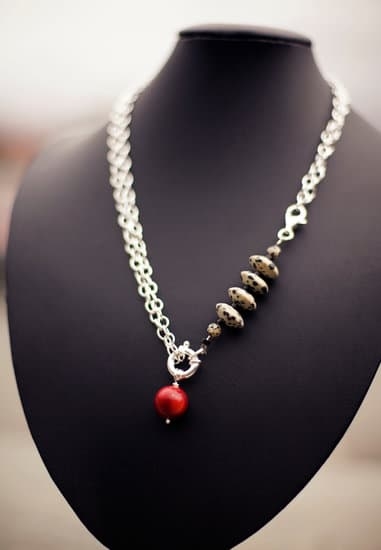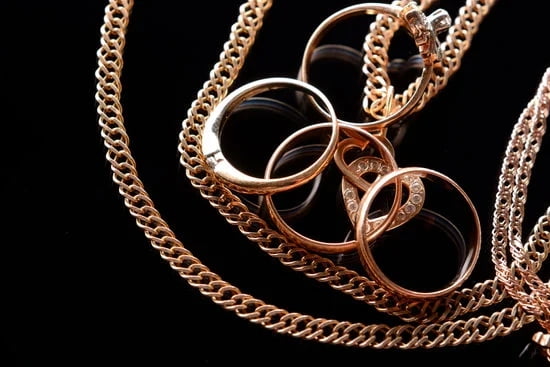Larimar, also known as the “Dolphin Stone” or the “Atlantis Stone,” has been a beloved gemstone for centuries. Its stunning blue and green hues make it a unique and sought-after material for jewelry making. In this article, we will delve into the captivating history of larimar jewelry, exploring its origins, geological significance, symbolism, cultural significance, and value in the world of jewelry.
Discovered in the 1970s in the Dominican Republic by Miguel Méndez and Norman Rilling, larimar quickly gained attention for its mesmerizing colors and patterns. It is believed to have formed from volcanic activity millions of years ago, making it a relatively young gemstone in terms of geological age.
Not only is larimar prized for its beauty, but it also holds significant cultural and historical meaning to both the indigenous people of the Dominican Republic and to those who appreciate its spiritual symbolism. From ancient times to modern trends, larimar continues to capture the hearts of jewelry enthusiasts worldwide. Join us as we embark on a journey through the captivating history of this unique gemstone and its enduring allure in jewelry design.
The Discovery of Larimar
Larimar, also known as “Stefilia’s Stone,” is a rare blue variety of the silicate mineral pectolite, found only in the Dominican Republic. The history of larimar jewelry begins with its discovery in 1916 by Father Miguel Domingo Fuertes Loren and Norman Riling, who reported the discovery to the world.
However, it wasn’t until 1974 that larimar was rediscovered by Miguel Méndez and Peace Corps volunteer Norman Dilling, who named the stone “Larimar” after Méndez’s daughter Larissa and the Spanish word for sea, “mar”.
The discovery of larimar is attributed to its formation within volcanic tubes, where hot gases under high pressure crystallize pectolite. These volcanic tubes were located on a mountain range called Los Chupaderos in Barahona province. Larimar’s striking blue color comes from copper substitution within its chemical structure, creating a range of hues from white and light-blue to green-blue shades.
The unique geological conditions that resulted in the formation of larimar make it one of the most coveted gemstones globally. This captivating gemstone has fascinated people for centuries due to its mesmerizing appearance and rarity. The discovery of larimar marked a significant milestone in the jewelry industry and opened up new possibilities for creating stunning, one-of-a-kind pieces that capture the essence of the Caribbean seas.
The Geological Significance of Larimar
Larimar, also known as “Stefilia’s Stone,” is a rare blue variety of pectolite found only in the Dominican Republic. Its unique blue color comes from the presence of copper within the stone, and its formation is closely tied to volcanic activity. This section will explore the geological significance of larimar and how its formation contributes to its rarity and beauty.
Formation of Larimar
Larimar was formed through a combination of volcanic and hydrothermal processes. The pectolite that makes up larimar began to form millions of years ago as a result of volcanic eruptions and subsequent hydrothermal activity. The interaction between hot, mineral-rich fluids and existing rock led to the creation of larimar deposits within cavities and fractures in the surrounding rock. Over time, these deposits solidified into the unique blue stones we see today.
Rarity and Exclusivity
The limited geographical distribution of larimar, found primarily within one specific region of the Dominican Republic, contributes to its rarity. The mining process for larimar is also challenging, as it often involves hand extraction of rough stones from steep hillsides or even underwater deposits. This combination of limited supply and labor-intensive extraction methods adds to the exclusivity and value of authentic larimar jewelry.
Geological Importance
From a geological perspective, larimar provides valuable insights into the history of volcanic activity in the region where it is found. Studying larimar can help geologists understand past environmental conditions, including temperature, pressure, and fluid compositions during its formation. Its unique composition and coloring make it an exciting subject for scientific research, further adding to its significance beyond its use in jewelry.
Larimar Mining and Production Process
Larimar, also known as “Stefilia’s Stone”, is a rare blue variety of the silicate mineral pectolite, found only in the Dominican Republic. Once the larimar stone is discovered and extracted from the mines, it undergoes a meticulous process to turn it into exquisite larimar jewelry pieces.
The production process for larimar jewelry involves several steps to transform the raw stone into beautiful accessories. Here are some of the key stages involved in larimar mining and production:
1. Mining: The first step in the production process is the extraction of larimar from the mines. Miners use various tools and techniques to carefully extract the raw stones, ensuring minimal damage to their natural beauty.
2. Sorting and Cutting: Once extracted, the larimar stones are sorted based on quality, color, and size. Skilled artisans then use precision cutting equipment to shape the stones into desirable forms such as cabochons, beads, or faceted gemstones.
3. Polishing and Finishing: After being cut, the larimar stones undergo a thorough polishing process to enhance their luster and smooth out any imperfections. This step is crucial in bringing out the stone’s stunning blue hues.
4. Setting: Finally, once polished and finished, the larimar stones are set into various jewelry settings such as rings, earrings, necklaces, and bracelets by expert jewelers who specialize in working with this unique gemstone.
The entire production process requires craftsmanship and attention to detail to ensure that each piece of larimar jewelry showcases the stone’s natural beauty while embodying exquisite design elements that make it truly one-of-a-kind.
The Symbolism and Meaning of Larimar in Jewelry
Larimar is a unique and stunning gemstone that has captivated jewelry enthusiasts for centuries. Its mesmerizing blue hues and swirling patterns make it a popular choice for those seeking a touch of elegance and tranquility in their jewelry collection. But beyond its physical beauty, larimar holds significant symbolism and meaning that adds to its allure as a precious stone used in jewelry.
In many cultures, larimar is believed to have spiritual and healing properties. It is often associated with promoting peace, tranquility, and relaxation. Some believe that wearing larimar jewelry can help reduce stress and anxiety, making it a sought-after gemstone for those looking to bring more balance and positivity into their lives.
Furthermore, larimar is also closely linked to the concept of communication and self-expression. It is said to enhance the ability to communicate effectively, making it an ideal stone for those who want to express themselves more clearly or improve their interpersonal relationships. As a result, larimar jewelry is often chosen for its symbolic significance in helping individuals find their voice and speak their truth.
The history of larimar jewelry also reveals its association with the sea and the sky. The serene blue color of larimar evokes imagery of clear waters and expansive skies, connecting the stone to themes of freedom, adventure, and boundless possibility. This symbolic representation has made larimar a popular choice for those seeking a sense of connection to nature or wanting to evoke feelings of serenity and openness through their jewelry pieces.
| Symbol | Meaning |
|---|---|
| Spirituality | Believed to promote peace, tranquility, and relaxation |
| Communication | Enhances the ability to express oneself effectively |
| Nature | Evoke feelings of serenity through connection to nature |
Larimar Jewelry Through the Ages
The history of larimar jewelry dates back to ancient times, with evidence of its use in adornment and spiritual practices found in various cultures. The stone’s striking blue color and unique marbled patterns have made it a prized gemstone for generations. In ancient civilizations such as the Taino people of the Caribbean, where larimar is exclusively found, the stone was believed to hold healing properties and was revered for its connection to the sea and sky.
Throughout history, larimar jewelry has been worn not only for its aesthetic appeal but also for its perceived metaphysical powers. Many believed that wearing larimar could bring inner peace, tranquility, and balance. This belief has contributed to the enduring popularity of larimar jewelry across different cultures and time periods.
In more recent history, larimar gained international attention in the 1970s when a local Dominican man named Miguel Méndez discovered deposits of the stone along the coast. Since then, larimar has been sought after by jewelry designers and collectors around the world, further cementing its place in the annals of gemstone history. Today, larimar remains an important part of the jewelry industry, valued not only for its beauty but also for its cultural significance and rich heritage.
Modern Trends in Larimar Jewelry Design and Fashion
Larimar jewelry has been experiencing a resurgence in popularity in recent years, as it has become a staple in modern fashion and design. The unique and striking blue hues of larimar make it a sought-after gemstone for both casual and formal wear.
In the world of contemporary jewelry design, larimar is often incorporated into bold statement pieces, as well as delicate, minimalist designs. The versatility of this gemstone allows for a wide range of creative expression, making it a favorite among jewelry designers.
In terms of fashion, larimar jewelry has made its mark on runways and red carpets around the world. Celebrities and fashion icons have been embracing the beauty of larimar, showcasing it in various forms such as earrings, necklaces, bracelets, and rings. Its soft blue tones have made it a popular choice for summer accessories and beachwear, adding a touch of elegance to any outfit.
The modern trend towards sustainable and ethical jewelry has also played a significant role in the rise of larimar’s popularity. As consumers become more conscious about the origins of their products, there is an increasing demand for ethically-sourced gemstones like larimar. This trend has led to more transparent supply chains and increased awareness about the environmental impact of mining operations. As a result, responsible sourcing practices have become integral to the production of larimar jewelry.
| Larimar Jewelry Trends | Modern Fashion |
|---|---|
| Resurgence in popularity | Showcased in runways and red carpets |
| Versatile gemstone for creative expression | Ethical sourcing practices |
The Value and Rarity of Authentic Larimar Jewelry
Larimar jewelry is known for its exquisite beauty and unique appearance. The value and rarity of authentic Larimar jewelry make it highly sought after by collectors and enthusiasts. The rarity of this gemstone can be attributed to its limited supply, as well as the labor-intensive production process required to transform it into stunning jewelry pieces.
The history of Larimar jewelry dates back to its discovery in the 1970s in the Dominican Republic. This rare gemstone, also known as “Stefilia’s Stone,” was formed through a combination of volcanic activity and the movement of tectonic plates, resulting in its distinctive blue hues. The scarcity of Larimar is due to the conditions that are required for its formation, making it a precious find for those seeking unique and valuable jewelry.
Authentic Larimar jewelry holds significant value due to its limited availability and the intricate craftsmanship involved in creating each piece. The color variations, from light sky blue to deep turquoise, further add to the allure of this gemstone. As a result, owning a piece of Larimar jewelry is considered a symbol of luxury and sophistication.
In recent years, the demand for authentic Larimar jewelry has continued to rise, further enhancing its value and rarity. Collectors and connoisseurs recognize the historical and cultural significance behind Larimar jewelry, adding emotional value to these exquisite pieces. As a result, owning an authentic piece of Larimar has become a symbol of prestige and discerning taste in the world of fine jewelry.
Caring for and Maintaining Larimar Jewelry
Caring for and maintaining your larimar jewelry is crucial to preserving its beauty and luster. With the right care, your larimar pieces can last a lifetime and be passed down as cherished heirlooms. Here are some essential tips for keeping your larimar jewelry in top condition.
Handling and Storage
When handling your larimar jewelry, it’s important to avoid exposing it to harsh chemicals or abrasive materials that can scratch or damage the stone. Always store your larimar pieces separately from other jewelry to prevent scratches and protect them from impact or breakage.
Cleaning and Care
To clean your larimar jewelry, use a mild soap and warm water with a soft brush, rinse thoroughly, and pat dry with a clean, soft cloth. Avoid using ultrasonic cleaners or steamers as they can potentially damage the stone. It’s also advisable to remove your larimar jewelry before engaging in activities such as swimming or using perfumes, lotions, or hairsprays that can affect the stone’s appearance.
Rejuvenating Your Larimar
Over time, the natural oils from your skin can contribute to giving your larimar jewelry a beautiful patina. However, if you prefer the original shine of the stone, you can gently polish it with a soft cloth to restore its luster. Be sure to use gentle strokes and avoid harsh cleaning agents that can damage the stone.
By following these simple care tips, you can ensure that your larimar jewelry remains stunning for years to come. Taking good care of your pieces not only preserves their beauty but also maintains their value as well. Remember that each piece of larimar jewelry has its own unique history and significance, making it even more precious for generations to come.
Conclusion
In conclusion, the history of larimar jewelry is as fascinating as the stone itself. From its serendipitous discovery in the 1970s to its geological significance and mining process, larimar has captured the hearts of jewelry enthusiasts around the world. Its unique blend of colors and artistic patterns make it a highly sought-after gemstone for designers and collectors alike.
The symbolism and meaning of larimar in jewelry have been treasured for centuries, with some cultures believing it to possess healing properties and spiritual significance. As a result, larimar jewelry has been worn throughout history as a symbol of tranquility, relaxation, and inner peace.
Today, modern trends in larimar jewelry design continue to evolve, showcasing the stone’s versatile appeal in both traditional and contemporary fashion. Despite its rarity and value, caring for and maintaining larimar jewelry is relatively simple, allowing wearers to enjoy its enduring allure for years to come. As we continue to appreciate the history of larimar jewelry, it’s clear that this captivating gemstone will remain an iconic part of the jewelry industry for many generations to come.
Frequently Asked Questions
What Is the Story Behind Larimar Stone?
The story of Larimar stone is closely tied to the Dominican Republic, where it was first discovered in 1916. It is said that a local artisan named Miguel Méndez rediscovered the stone in 1974 and named it after his daughter, Larissa, combined with “mar,” the Spanish word for sea.
What Is So Special About Larimar?
What makes Larimar so special is its striking blue and turquoise hues, which are reminiscent of the Caribbean sea. It is also believed to have metaphysical properties such as promoting tranquility and peace, along with being associated with healing and communication.
What Happens When You Wear Larimar?
When you wear Larimar, some people believe that it can help to calm emotions and soothe stress or anxiety. It is also thought to promote clear communication and aid in finding inner peace. Additionally, wearing Larimar jewelry may be considered a way to carry a piece of the Caribbean’s calming energy with you.

Welcome to my jewelry blog! My name is Sarah and I am the owner of this blog.
I love making jewelry and sharing my creations with others.
So whether you’re someone who loves wearing jewelry yourself or simply enjoys learning about it, be sure to check out my blog for insightful posts on everything related to this exciting topic!





